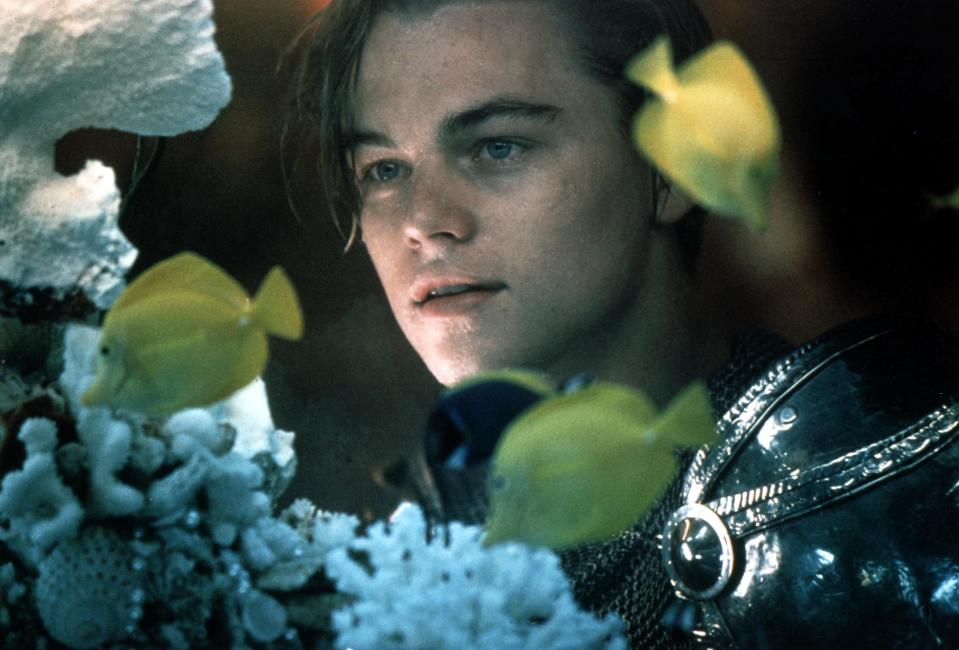How Timothée Chalamet Became This Generation’s Leonardo DiCaprio, but with Fewer Hits

- Oops!Something went wrong.Please try again later.
- Oops!Something went wrong.Please try again later.
- Oops!Something went wrong.Please try again later.
- Oops!Something went wrong.Please try again later.
Timothée Chalamet, the 26-year-old costar of Luca Guadagnino’s “Bones and All” (United Artists), inspires slavish fans and critical praise — not unlike Leonardo DiCaprio 25 years ago when he made “Titanic.” The similarities in their trajectories are remarkable. Precociously talented; acclaimed portrayals of sensitive adolescents; risky roles; early, passionate followings by teenage girls; and acting Oscar nomination before the age of 27 (in Chalamet’s case lead).
Their significant difference is Chalamet stands at the threshold of a major career. By the same point in his own work, DiCaprio could have retired and be considered an iconic star. None of this diminishes Chalamet’s significant achievements, but it highlights differences in their eras.
More from IndieWire
Martin Scorsese 'Kept Fighting' for 'Wolf of Wall Street' Yacht Scene to Be in Final Cut
Luca Guadagnino: Armie Hammer's Character Would 'Of Course' Be Part of 'Call Me' Sequel
“Bones and All” is no “Titanic” (not that anything is). The best-case scenario for this $16 million-budgeted drama is a breakout, not a blockbuster. Guadagnino (“Call Me by Your Name,” “Suspiria”) has established a reputation for edgy, R-rated films with significant (and stylish) sex and violence. If the ’80s-set road-trip cannibal romance finds a wider audience, much credit will go to Chalamet.
“Bones and All” premiered at the Venice and Toronto Film Festivals to positive response. It opens in five New York/Los Angeles theaters this Friday ahead of a 2,500+ run the following Wednesday, with Warner Bros. Discovery handling most overseas territories.
Chalamet makes his debut as a producer here, his second film with Guadagnino after their breakout “Call Me By Your Name.” What is curious is here, as with most of his films, he’s not the clear lead — a rare instance of leading-man self-effacement. The storyline belongs to Taylor Russell’s Maren, a cannibal who embarks on a cross-country trip and finds other flesh-eaters, including Chalamet’s drifter Lee.

©Sony Pictures/Courtesy Everett Collection
In addition to being the co-lead with Armie Hammer in “Call Me by Your Name,” Chalamet also thrived in “Beautiful Boy” (second to Steve Carell). In “Lady Bird,” and “Little Women” (both for Greta Gerwig), his impact exceeded his screen time. “The French Dispatch” was an ensemble and Woody Allen’s “A Rainy Day in New York” was barely released in the U.S.
As “Dune” protagonist Paul Atreides, Chalamet was the unabashed lead of a film that grossed $400 million worldwide. However, his significant contributions to the film’s success were matched by the massive interest in Denis Villeneuve’s adaptation of a beloved sci-fi novel. (The sequel is now in production.)
All told, that’s four $100-million Chalamet films, three of which are led by other actors. At this stage in his career, DiCaprio had three $100 million films as a lead (two by adjusting). One, of course, was “Titanic,” the biggest-grossing movie of the last 40 years ($1.2 billion adjusted). Before that, he made many smaller films not unlike Chalamet’s including “This Boys Life,” “What’s Eating Gilbert Grape,” “The Basketball Diaries,” and “Total Eclipse,” all with varying degrees of success.

20th Century Fox/Kobal/Shutterstock
DiCaprio’s breakout was Baz Luhrmann’s 1996 “Romeo + Juliet” opposite Claire Danes, which announced him as a major commercial draw. “Titanic” followed, with “The Man in the Iron Mask” released two weeks before “Titanic” swept the Oscars. “Mask” was critically reviled, but DiCaprio’s pull meant it made (adjusted) over $400 million worldwide.
That was DiCaprio at 24, and it’s a phenomenon rarely seen before or after. It’s far more difficult — perhaps impossible — to do that today. Neither actor has appeared in a comic-book franchise or a sequel (apart from DiCaprio’s direct-to-video debut “Critters 3” and Chalamet’s “Dune 2”), but that’s now what drives most box-office hits. To put it another way: Adjusted for inflation, the budget for “Mask” was $65 million. When’s the last time we’ve seen a $65 million one-off gross nearly seven times its budget?
Domestic expectations for “Bones and All” are $20 million at the high end (and considerably more overseas), followed by a healthy Chalamet-driven afterlife. However, the biggest tests for the actor come next year with “Wonka,” from “Paddington” director Paul King next Christmas, as well as “Dune 2.” Chalamet’s career has been buoyed by social media in a way that was impossible for Di Caprio — but in the 21st century, Chalamet’s 18 million Instagram followers don’t necessarily translate to box-office dominance.
Not that becoming the world’s biggest movie star was ever easy, but 1997 offered fewer obstacles. Eight of the year’s 10 top films were originals, in a variety of genres including comedies (“Liar, Liar”), dramas (“Good Will Hunting,” which launched Matt Damon and Ben Affleck), high-end actioners (“Air Force One,” “Face/Off”), and hybrids (“Men in Black”).
“Good Will Hunting” made over $330 million on a $19 million budget (all figures adjusted). Today, a massive hit means a franchise, full stop. The demands to bend to formula make it tougher for idiosyncratic talents like Chalamet to succeed at DiCaprio’s level.
There are other ways of defining success, of course. Can he conform to the idea of an actor as “brand” while still making interesting, and off-beat films? With box-office trends beyond his control, that’s Chalamet’s real challenge.
Best of IndieWire
New Movies: Release Calendar for November 18, Plus Where to Watch the Latest Films
51 Directors' Favorite Horror Movies: Bong Joon Ho, Quentin Tarantino, Guillermo del Toro, and More
Sign up for Indiewire's Newsletter. For the latest news, follow us on Facebook, Twitter, and Instagram.

